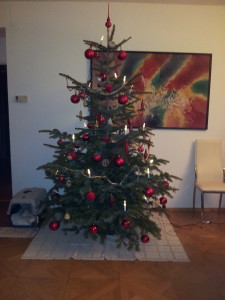Camera sensors are successors of formerly used photographic films. They both have generally the same function however camera sensors work on electronic basis. These devices are able to convert light on electronic signal. There is big stack of things which depend on the type of sensor such as the size and quality of photos, the way how camera behaves in darker surrounding, camera dimensions, etc.
How does it work?
When trying to understand the principle it is very important to understand what is it a photodiode (specifically silicon photodiode, when talking about cameras). That is a device which works on the principle of PN junction and, unlike in case of a normal diode, it is adjusted so that light can get into the area of PN junction. On photodiode is brought electric voltage. If light (photons) gets into the area of the PN junction, thanks to the presented electric voltage photons are converted to electrons. And here we have the electronic signal which I mentioned in the introduction. Too complicated? There exists one more, easier definition: Imagine the sensor is set of goblets into which the light that passed through objective is poured. In each goblet there is different number of photons – each is a bit lighter or darker (lighter parts of the image = more photons, darker part of the image = less photons). Together there is created something like a mosaic – and that is the image, depending on where are lighter and where are darker places on it.
Types of sensors
The process of taking a picture doesn´t end in camera sensors. There are still many other things necessary to be done so that we can store and later recall our photos from cameras. The electronic signal created in sensor, is analogue signal, which is then send to A/D convertor, a device in which it is converted to digital signal. Depending on how the signal transfers from sensor to A/D convertor we can distinguish two basic types of camera sensors: CCD and CMOS
CCD
In CCD the signal firstly moves from all the vertical cells to the horizontal bottom line of cells and then it is send away. CCDs were (2 years ago) also the most commonly used type of sensors and one of the oldest technologies of capturing image on digital cameras. Compared to CMOS they used to have better image quality and provided better control of photographic noise. However it seems that lately the CMOS technology started to catch the CCD. A big disadvantage of CCD is it´s high consumption of energy.
CMOS
Unlike in CCD where the signal is moving in the sensor before it can be send, in CMOS every cell has its own connection. CMOS sensors work more effectively and generally have lower consumption of energy than CCD. Besides, CMOS technology has better results if speaking about burst mode photographies. This technology is still in development and there is much to improve about it, however it seems that it will play an important role in future cameras.
Other types
Besides CCD and CMOS there also exist e.g. Foveon X3 sensors (based on CMOS technology) which are used by brand Sigma or Live MOS sensors used by brands Leica, Olympus and Panasonic.
Image quality
Image quality depends on size of sensor, and number and size of pixels, which are light- sensitive spots on the sensor (the goblets). Generally the bigger the lens of the camera the bigger the sensor is needed to take high-quality photos. And a big sensor needs to have more and bigger pixels. For example a single-lens reflex camera has bigger sensor, bigger pixels and more pixels than phone camera. It is also able to catch more light. Therefore, if we are taking a picture by phone and by single-lens reflex camera and we are outside during a sunny day, those two photos will be almost identical considering their quality. But if there was fog and gloomy outside, we would for sure get a higher-quality picture with the single-lens reflex camera (because it can catch more light than phone camera).
photo taken by single-lens reflex camera
photo taken by mobile phone
Sources
Dove, Jackie, and Pavel Kreuziger. „Malý Průvodce Snímači U Fotoaparátů – 1. Díl.“ PCWorld. N.p., 3 Dec. 2013. Web. 10 Jan. 2016. <http://pcworld.cz/hardware/maly-pruvodce-snimaci-u-fotoaparatu-1-dil-46787>.
Dove, Jackie, and Pavel Kreuzige. „Malý Průvodce Snímači U Fotoaparátů – 2. Díl.“ PCWorld. N.p., 4 Dec. 2013. Web. 10 Jan. 2016. <http://pcworld.cz/hardware/Maly-pruvodce-snimaci-u-fotoaparatu-2-dil-46788>.
Lindner, Petr. „Past Na Fotony Aneb Snímače Digitálních Fotoaparátů.“ Digiarena.cz. N.p., 8 Nov. 2010. Web. 10 Jan. 2016. <http://digiarena.e15.cz/past-na-fotony-aneb-snimace-digitalnich-fotoaparatu_3>.
„Obrazový Snímač.“ Wikipedia. N.p., 31 Jan. 2015. Web. 10 Jan. 2016. <https://cs.wikipedia.org/wiki/Obrazov%C3%BD_sn%C3%ADma%C4%8D>.
sources used only for word definitions:
„Fotodioda.“ Wikipedia. N.p., 24 Apr. 2015. Web. 10 Jan. 2016. <https://cs.wikipedia.org/wiki/Fotodioda>.
„A/D Převodník.“ Wikipedia. N.p., 21 Nov. 2014. Web. 10 Jan. 2016. <https://cs.wikipedia.org/wiki/A/D_p%C5%99evodn%C3%ADk>.


